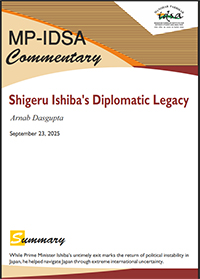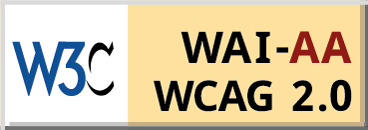Shigeru Ishiba’s Diplomatic Legacy
- September 23, 2025 |
- IDSA Comments
Relations with the ROK
When he entered office in October 2024, Ishiba had inherited a much more stable relationship with the Republic of Korea (ROK), thanks to the shuttle diplomacy initiated by his predecessor, Fumio Kishida and ROK President Yoon Suk-yeol. However, that relationship was thrown into uncertainty and chaos within a few months as Yoon launched his ill-advised self-coup on 3 December 2024.[3]
To his credit, Ishiba continued to project a mixture of calm and concern over the events in Seoul amidst fears that Yoon’s actions risked tainting bilateral ties by association. As a chaotic succession of caretaker governments rotated in office until elections in May 2025, Japan maintained the momentum of shuttle diplomacy. This outreach was bipartisan, as the Japanese Ambassador was dispatched several times to meet the likely victor of the mid-term elections, current President Lee Jae Myung, despite the latter’s history of charged comments on Japan.
It would probably not be an exaggeration to say that these overtures had some effect, as the newly elected President Lee quickly toned down his hitherto strong antipathy towards Japan and agreed to maintain the forward-looking stance set by his predecessor.[4] The visit by incoming Foreign Minister Cho Hyun to Tokyo on his way to Washington was a signal that the ROK continued to emphasise its ongoing rapprochement with Japan.[5] President Lee himself had a successful series of interactions with Ishiba in Canada in June[6] and later in Tokyo in August.[7] It is only fitting, therefore, that Ishiba may choose to visit Seoul for his final foreign tour before leaving office.[8]
Relations with the US
The trickiest challenge Ishiba faced was Donald Trump’s return to the White House in November. The then-former President attacked Japan for its alleged ‘free-riding’ on the United States of America’s security commitments, even on the campaign trail. Simultaneously, Trump provided a forewarning of his new approach by threatening stiff tariffs on Japan for its allegedly unfair trade balance.
Once inaugurated, Trump initially signalled a significant softening in his stance during his summit meeting with Ishiba on 7 February. The two sides agreed to take bilateral ties to new heights as part of a ‘golden era’. Ishiba promised investments of over a billion US dollars in American industries. At the same time, Trump provided exceptional clarity on the US’s treaty commitments to Japan by explicitly including the disputed Senkaku Islands within the ambit of the US–Japan Mutual Security Treaty of 1960.[9]
On 4 April, Trump changed tack yet again. Seeming to have soured on Japan in particular, he imposed 24 per cent tariffs on Tokyo in retaliation for what he claimed were exceptionally high barriers that prevented American companies from operating there. He also announced his moratorium of 90 days for all countries to negotiate a ‘deal’ with Washington that would level the playing field for American firms.[10]
Initial attempts to secure an exemption or carve out for Japan proved impossible, as US officials demanded comprehensive negotiations on eliminating all barriers. Realising the futility of this enterprise, Ishiba (or those advising him) embarked on two interrelated policy directions.
Firstly, Ishiba clearly laid down red lines and conveyed them publicly. He explicitly ruled out concessions in the agricultural sector, committing to ‘defend what must be defended’ while indicating flexibility wherever feasible. Secondly, he dispatched a close confidante, Economic Revitalisation Minister Ryosei Akazawa, as chief negotiator.[11] Akazawa’s appointment proved fortuitous, as the ensuing rounds of negotiations proved exceedingly difficult.
The difficulty was primarily due to confusing signals emanating from Washington, where Trump initially tried to insert himself into the negotiations to demand that Japan’s defence posture and spending be discussed within the rubric of the trade talks. Having successfully seen off this attempt to link Japan’s defence budget with its trade policy, Japan then faced a barrage of verbal attacks from Trump and those around him as they accused it of various obstructionist and trade-distorting measures.[12] Nevertheless, after eight rounds of negotiations, Japan and the US signed a trade deal on 22 July, which nominally reduced the burden of tariffs to 15 per cent.[13]
Many commentators have argued that Ishiba’s resignation may have contributed to the deal’s lopsided nature. Japanese commitments to secure a greater proportion of US-produced rice within existing import quotas and the ‘no-stacking’ exemption granted to already-tariffed goods are undoubtedly net positives and the best that may be expected.
Relations with India
Ishiba’s final diplomatic achievement was the India–Japan Bilateral Summit, which occurred when Prime Minister Narendra Modi visited Japan on 29–30 August 2025.[14] The Summit occurred after Ishiba’s defeat in the Upper House Elections and growing calls for his resignation. Despite this, it can be argued with some justification that Ishiba may have delayed declaring his intention to step down until after he met Prime Minister Modi, indicating his strong personal desire to seal his imprimatur on India–Japan ties.
The summit was fruitful, resulting in over 13 memoranda of understanding and around 170 business-to-business agreements being exchanged between the two sides. A Joint Declaration on Security Cooperation that extended cooperation between the two sides to new areas such as Special Forces cooperation and Nuclear, Biological and Chemical weapons countermeasures and called for broader track 1.5 dialogues between think tanks was a notable outcome of the summit.[15] Another was a joint statement on the ‘India-Japan Joint Vision for the Next Decade’, covering eight key areas where both countries would devote resources.[16]
A few days before the bilateral summit, Ishiba, during his inaugural speech at the Tokyo International Conference on African Development (TICAD9) in Yokohama, announced the ‘Indian Ocean-Africa Economic Corridor’ initiative, which sought to use India as a base for Japanese companies to expand into Africa through infrastructural linkages between key ports and waterways. This scheme envisages further developing Mumbai’s carrying volume to accommodate traffic from key African Indian Ocean ports such as Mombasa in Kenya.[17] India’s key role as a springboard for Japanese firms is vital here, as it leverages India’s strong manufacturing capabilities to increase third-country/regional collaboration in Africa.
Conclusion
Shigeru Ishiba’s cabinet certainly had its share of gaffes and missteps, but diplomatically, Ishiba proved to be a safe pair of hands. His continued commitment to improving ties with the ROK, his firm but flexible handling of Donald Trump’s moods, and his effort to deepen relations with India were incremental steps that strengthened Japan’s international engagement.
The challenge facing his successor is clearly substantial. Domestically, becoming the head of a minority government will mean that they will have to carry as many opposition parties as possible. This will likely be a Herculean task if an arch-conservative such as Sanae Takaichi, the most promising prospect to succeed Ishiba (and become Japan’s first female prime minister), is selected to lead the LDP.
The centre-left Constitutional Democratic Party (CDP), the largest opposition party in the Lower House, has already stated its opposition to working with her.[18] The far-right parties Sanseito and the Conservative Party of Japan (CPJ) may also refuse to cooperate unless she implements their policy platforms, such as ending immigration in its entirety. Shinjiro Koizumi, another promising candidate, may be more amenable to the centre-left but will likely face significant opposition from the centre- and far-right, as he is not as committed as Takaichi to the far-right’s pet causes such as ending immigration and rewriting Japan’s modern history.
Diplomatically, too, the two leading choices may face significant headwinds. Takaichi, as the self-proclaimed inheritor of the late Shinzo Abe’s policies, may cause a rift to grow again between the ROK and Japan, imperilling the fragile rapprochement between the two sides.[19] Koizumi, on the other hand, is untested in diplomacy. With the US in particular, Koizumi may be particularly vulnerable to President Trump’s confrontational negotiation tactics, especially on trade and security issues. Above all, there is a very real risk that either candidate may fall prey to the xenophobia and racism encouraged by the far-right populists and shutter Japan’s already hesitant opening to much-needed foreign labour, thus damaging the foundations of bilateral ties with labour exporters such as India and Southeast Asia.
Views expressed are of the author and do not necessarily reflect the views of the Manohar Parrikar IDSA or of the Government of India.
[1] Keita Nakamura, “Japan PM Ishiba to Resign Within 1 Year After Taking Office Amid Pressure”, Kyodo News, 7 September 2025.
[2] “Trump Says ‘Surprised’ About Japan PM Ishiba Stepping Down”, Kyodo News, 8 September 2025.
[3] Chung-min Lee, “Yoon’s Failed Political Coup and South Korea’s Mounting Crisis”, Commentary, Carnegie Endowment for International Peace, 5 December 2024.
[4] Park Jae-hyuk, “No More ‘No Japan’? Lee Jae-myung Pledges Stronger Seoul-Tokyo Economic Ties”, The Korea Times, 11 May 2025; Walter Sim and Aw Cheng Wei, “Continuity or Reset? Japan, China Seek Clues to S. Korea President Lee Jae-myung’s Foreign Policy”, The Straits Times, 4 June 2025.
[5] “Japan-ROK Foreign Ministers’ Meeting and Working Dinner”, Ministry of Foreign Affairs of Japan, Government of Japan, 29 July 2025.
[6] “Japan-ROK Summit Meeting”, Ministry of Foreign Affairs of Japan, Government of Japan, 17 June 2025.
[7] “Japan-ROK Summit Meeting”, Ministry of Foreign Affairs of Japan, Government of Japan, 23 August 2025.
[8] “石破首相、釜山訪問を調整 今月末、最後の外遊見通し” [Preparations on for PM Ishiba’s Pusan trip, Last Diplomatic Trip Expected to Occur Later This Month], Jiji Press, 18 September 2025.
[9] “Japan-U.S. Summit Meeting”, Ministry of Foreign Affairs of Japan, Government of Japan, 7 February 2025.
[10] Nathan Layne and John Geddie, “Trump Hails ‘Big Progress’ in Japan Tariff Talks”, Reuters, 17 April 2025.
[11] Ibid.
[12] Ibid.
[13] Josh Boak, “Trump Announces Trade Deal with Japan That Lowers Threatened Tariff to 15%”, Associated Press, 23 July 2025.
[14] “15th India-Japan Annual Summit Joint Statement: Partnership for Security and Prosperity of Our Next Generation (August 29, 2025)”, Ministry of External Affairs, Government of India, 29 August 2025.
[15] “Joint Declaration on Security Cooperation between India and Japan (August 29, 2025)”, Ministry of External Affairs, Government of India, 29 August 2025.
[16] “India – Japan Joint Vision for the Next Decade: Eight Directions to Steer the Special Strategic and Global Partnership (August 29, 2025)”, Ministry of External Affairs, Government of India, 29 August 2025.
[17] “Ishiba Intends to Announce Plan to Improve Africa-Asia Logistics Networks at TICAD 9; Japan Plans to Accelerate Copper Ore Corridor Development”, The Yomiuri Shimbun, 14 August 2025; Gurjit Singh, “TICAD-9 and the Emerging India–Japan–Africa Matrix”, Outlook India, 26 August 2025.
[18] 奥原慎平 [Okuhara Shinpei], “「コテコテ保守、ガリガリ左は勘弁」立民・安住氏、野党連立に意欲も 参政は「一線画す」” [“No die-hard conservatives, far-left forces”, says Mr. Azumi of the CDP; indicates willingness for opposition coalition, but ‘line stops’ at Sanseito], 産経新聞 [The Sankei Shimbun], 17 September 2025.
[19] “石破総理の辞任表明 韓国“日韓関係は後退か” 高市氏を「女性版・安倍」と表現など次期総理候補に警戒感あらわ” [PM Ishiba’s resignation announcement: South Korea fears “possibility of worsening Japan-ROK ties”, expresses clear wariness of next PM candidate Sanae Takaichi through statements such as “Female version of Abe”], TBS News Dig, 8 September 2025.






